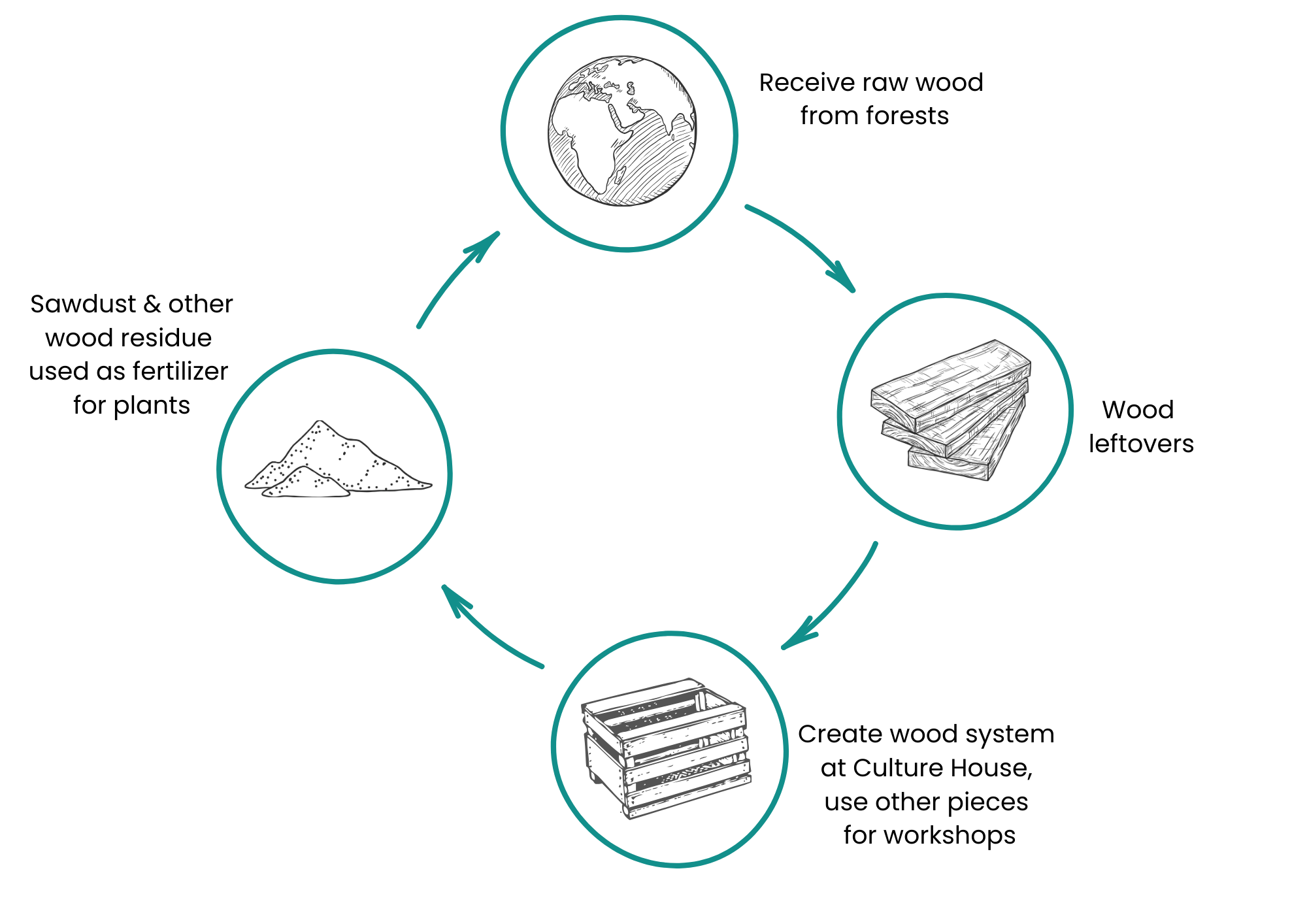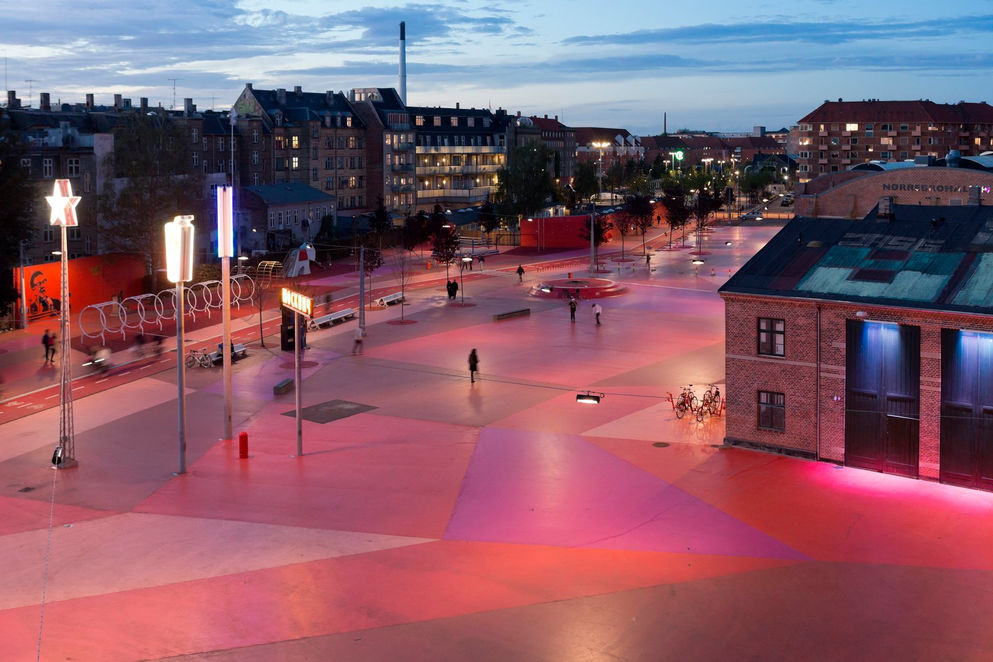Designing User-Centered Sustainable Solutions for Denmark's Cultural Spaces


Project Overview
Global Circular Competences with Urban Mining
As part of the KEA Charette 2023, Denmark, an international design workshop, my team and I collaborated with 80+ other students worldwide to apply UX principles to Urban Mining and Circular Economy. Our challenge was to design a user-centered, sustainable experience by repurposing human-made materials in the Danish neighborhood of Nørrebro, Copenhagen. We focused on community engagement, intuitive design for circular practices (reuse, repair, refurbish, recycle), and creating value-driven solutions for local businesses and organizations.
Process Overview:
Project Type
UX-Driven Sustainable Innovation Project
Process Involved
Video Editing
Audio Editing
Wood-making Workshop
Canva (Presentation)
Microsoft Word (Report)
Duration
5 days
Team
Team of 7
Aksha, Gabriele, Giulia, Katharina, Katrine, Ravi & Will
Project Type
UX-Driven Sustainable Innovation Project
Process Involved
Video Editing
Audio Editing
Wood-making Workshop
Canva (Presentation)
Microsoft Word (Report)
Duration
5 days
Team
Team of 7
Aksha, Gabriele, Giulia, Katharina, Katrine, Ravi & Will
Problem Definition
A need for sustainable & adaptive cultural space within the community
The world's Smallest Culture House, located between the Red Square & Black Square of Nørrebro, Copenhagen, Denmark, struggled with community engagement, weather challenges, and spatial constraints. To foster respect and usability, it needed a secure, portable, and eco-friendly design that supported gardening, cultural events, and outdoor seating. With plans for expansion and relocation, the solution needed to be adaptive, sustainable, and community-driven to strengthen connections and preserve Denmark’s biodiversity values.
Nestled between Nørrebro’s vibrant Red and Black Squares, the World’s Smallest Culture House is a 20ft freight container transformed into a community-driven creative hub. Serving as a refuge in the city’s fast-paced environment, it offers artistic workshops and social activities for locals— from young families to students and refugees. Surrounded by a small green space, it provides a much-needed place to unwind, connect, and engage in culture and play. The security of the place is governed entirely by community trust & respect.
Nadja is the head volunteer of the Smallest Culture House. She is a kind woman who wants to help the neighborhood, and encourage more volunteers to join in.
Currently, she hosts cooking, gardening, knitting, other art & crafts activities & waste management workshops. She also sometimes organizes movie screenings at the Culture House, if the weather permits. Overall, she tries to make the space suitable for families and children to sit and unwind after a long day's of work.
The aim of the Culture House is to bring together:
-
Families
-
Children
-
Elderly
-
Trauma victims (including women, refugees and more)
-
Recovering addicts
-
Lonely individuals
-
Anyone else passing by in the neighbourhood
-
The NEXT school: within the neighborhood host wood-making classes for students. The client loves collaborating with the school for various activities.
Sports Hall: right behind the Culture House is an indoor Sports hall that the client utilizes during bad weather to host workshops & activities. She also loves partnering with them to host other events.
KEA - Copenhagen School of Design and Technology: The organizers of this design workshop are interested to help the Culture House and the city of Denmark to come up with sustainable solutions involving the concept of Urban Mining.
"We are trying to collaborate with NEXT school as they have a big issue about... that they are throwing too much waste out. I guess they are happy to work with us because we can use the leftovers for our workshops/activities"
- Nadja, Volunteer at the Culture House
We conducted extensive interviews with the client, and 4 members from the target audience who were: a student, 2 workers working in the area and a female resident living in the area.
With all the attained information, and keeping in mind the goals of KEA Charette, we summarized the challenges.

Solution
So, how did we help the Culture House?
My team and I decided to solve problems that also fulfilled the Charette's themes & requirements. We addressed the problem of storage, sustainability, modularity, portability, flexibility & community building.
1. How might we...
How might we facilitate connections among locals in order to build a community based on respect?
2. How might we...
How might we create a communal space for locals in order to unwind and relax?
3. How might we...
How might we design a flexible system using locally sourced urban materials so that waste can be minimized?
Concept Statement
"All aspects of wood waste can be upcycled or recycled. By using these materials we can create a flexible system that can accommodate the needs of the local community and enable inter-personal connection."


Proposed Solution
Nested Wood System
This nested box system made of spruce minimizes waste and maximizes usability.
Inspired by Russian dolls, the product allows for efficient storage and adaptability, catering to diverse community needs.
Leftover spruce wood from production is repurposed for creative workshops at the World’s Smallest Culture House, reinforcing community engagement and eco-conscious design.
The tool-free joint system ensures easy assembly and disassembly, making it a versatile, user-friendly, and sustainable solution for both storage and creative expression. It is portable, and can be easily transported anywhere.


The wood system design is a great way to ensure that the Culture House and its surrounding community become a part of the ongoing initiative by the Denmark government to make the country more sustainable and bio diverse. The process of urban mining the locally sourced wood will ensure that almost all the waste wood has been utilized and ends up back into earth once its life cycle is complete.
Design Process
The Double Diamond Process
During KEA Charette, we were asked to follow the double diamond process for problem solving. We started off with an in-depth research of various problems faced by the client and potential target audience of the Culture House, then narrowed down to addressing one of their problems regarding sustainability. We brainstormed various solutions, before narrowing down to the 'WOOD SYSTEM', that was able to also fulfill a few other problems automatically.

Team Process Video

Ideation Process
Insights
Feedback
Feedback #1
"The idea of using waste wood is very nice! I would be very interested in volunteering if I were to meet people my age. You could attract more people if you were to place your products in the square for display"
- Single mother, Resident of Nørrebro
Feedback #2
"I love the prototype and how playful it looks. So much could be done with it because it is also very portable and light. I could also use it in a creative workshop for kids to decorate it"
- Nadja, client & head volunteer of Culture House
Key Takeaway
This was a brand new and great experience for me, working with a multi-talented team of students from around the globe, and representing my college (Humber) on a global stage. It was great learning from each other, as all of us brought a different skillset to the table.
Copenhagen is a beautiful city, so it was fun exploring and felt great doing our small part to give back to the society. Winning the competition was definitely the cherry on the top!
View More Work
Key Takeaway
This was a brand new and great experience for me, working with a multi-talented team of students from around the globe, and representing my college (Humber) on a global stage. It was great learning from each other, as all of us brought a different skillset to the table.
Copenhagen is a beautiful city, so it was fun exploring and felt great doing our small part to give back to the society. Winning the competition was definitely the cherry on the top!
























